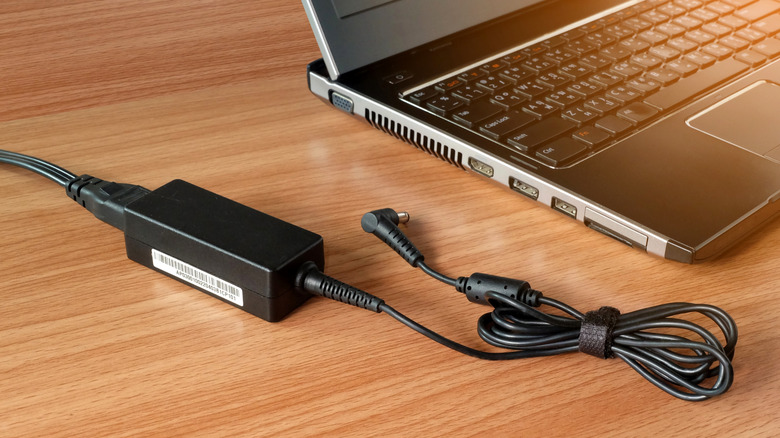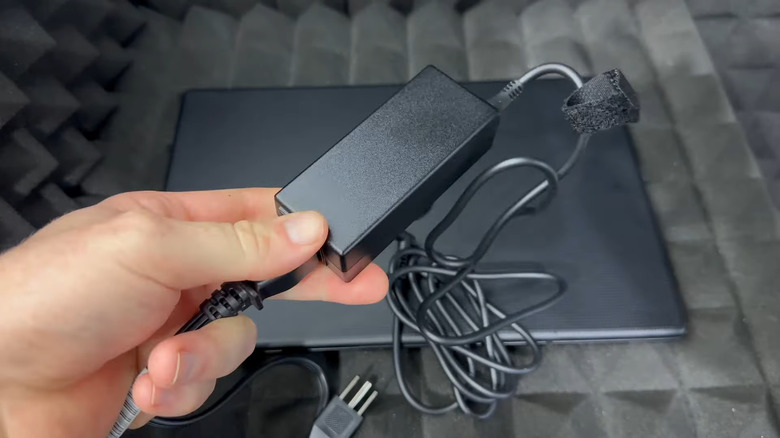Why Do Most Laptop Chargers Have A Brick?
Charging your laptop is something that you have to do often to take advantage of its portability. But unlike your phone's compact adapter, laptop chargers are usually bulky. While some newer laptops that use USB-C for charging have smaller adapters, you'll find that most models still have a thick brick halfway down the cable. That brick, also known as an AC adapter, plays an important role: it converts AC (alternating current) into DC (direct current). That's because, unlike other appliances in your home, such as light bulbs or hair dryers, laptops and most other electronics run on DC power.
While the size and shape of the charging brick can vary depending on the laptop's brand and model, they all do the same job. The adapter converts the power from the wall outlet, which then goes through the cable to charge the laptop's battery. Simply put, the adapter ensures your laptop receives the correct type and amount of power. Since different laptops have different power requirements, manufacturers typically recommend using their original chargers.
What's inside the laptop charger brick and why do they get so hot?
Inside your laptop's charging brick, there are three main components: transformers, capacitors, and diodes. Each one plays a key role in making sure your laptop charges efficiently and safely. The transformer, for instance, converts alternating current into direct current that your laptop can use. Capacitors help smooth out fluctuations in voltage to ensure a steady flow of power, while diodes make sure the current flows only in one direction.
When your laptop charger converts power, some of that energy is lost as heat. That's why your laptop charger often feels warm, especially if you've been using it for a while. To ensure it can dissipate the heat easily, you must place it where there's good airflow. It's also important to handle the charger carefully and protect it from drops and bumps. And when you're not using it, you should avoid wrapping the cable too tightly, as that can lead to wear and tear over time. A damaged charger can lead to slower charging or stop working altogether.

